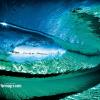Hello all,
Hoping to get some help working through the chemistry of monolaurin and its potential effect on 5a-reductase. For a quick background, I have started supplementing monolaurin for ebv virus secondary activation. I read the following study :
Abstract
"In this study, we show that 5α-reductase derived from rat fresh liver was inhibited by certain aliphatic free fatty acids. The influences of chain length, unsaturation, oxidation, and esterification on the potency to inhibit 5α-reductase activity were studied. Among the fatty acids we tested, inhibitory saturated fatty acids had C12–C16 chains, and the presence of a C[DOUBLE BOND]C bond enhanced the inhibitory activity. Esterification and hydroxy compounds were totally inactive. Finally, we tested the prostate cancer cell proliferation effect of free fatty acids. In keeping with the results of the 5α-reductase assay, saturated fatty acids with a C12 chain (lauric acid) and unsaturated fatty acids (oleic acid and α-linolenic acid) showed a proliferation inhibitory effect on lymph-node carcinoma of the prostate (LNCaP) cells. At the same time, the testosterone-induced prostate-specific antigen (PSA) mRNA expression was down-regulated. These results suggested that fatty acids with 5α-reductase inhibitory activity block the conversion of testosterone to 5α-dihydrotestosterone (DHT) and then inhibit the proliferation of prostate cancer cells."
If anyone skilled in chemistry could help walk me through this, I would appreciate It. As I see it, monolaurin is a mono-ester of lauric acid. As stated above "Esterification and hydroxy compounds were totally inactive." was I correct in the assumption monolaurin goes through esterification, and if so, does stating they are totally inactive give evidence that monolaurin does not have an effect on 5a-reductase? Thanks in advance for the feedback!
Best,
Travis Mitchell












































